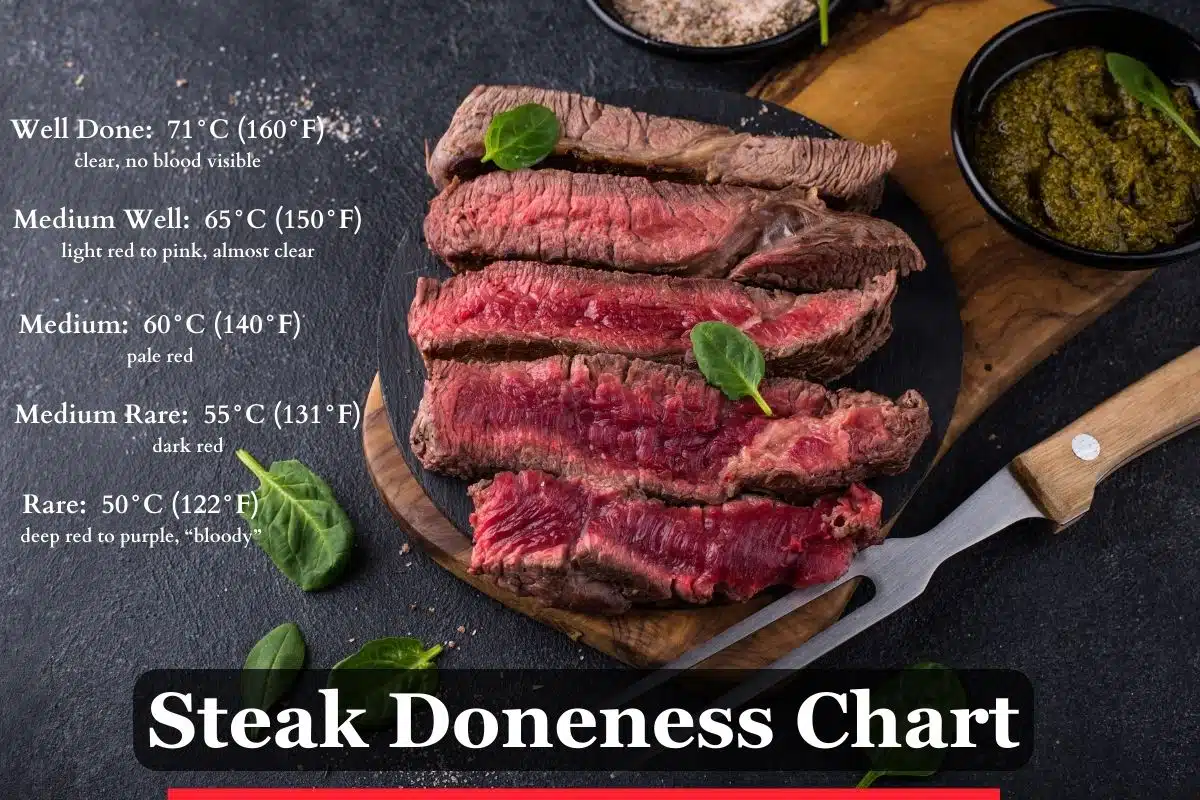Steak Doneness Guide: Rare vs Medium Rare vs Well Done

Roasting large joints of meat to the correct doneness can be fairly difficult at times and once the roast is over done, there is no turning back.
The difficulty starts with differences in doneness system. While in classical French cooking (and most European countries) there are only four degrees of doneness (“blue”, “saignant”, “à point” and “bien cuit”), in the rest of the world, and certainly in English-speaking countries, we generally use five degrees of doneness (rare, medium rare, medium, medium well and well done).
Some even order the meat by percentages e.g. from 25% for rare, to 70%, 80% and obviously 100% for well done. Whatever method one prefers, the easiest solution to avoid disappointment is to use a meat thermometer.
This scientific approach is much better than poking a meat fork into the meat and trying to judge the cooking temperature by the color of the juices that seep out.
Using a thermometer might be consider an old fashion method, but it certainly works well, especially when you’ve gained a bit of experience.
- The thermometer can be left inside the joint/roast while it is roasting. But this is not always advisable, especially when roasting meat on a BBQ grill, or basting with liquid or marinade.
- Stick the needle into the meat so that the point reaches the middle of the thickest point of the roast. Depending on the type of thermometer used, ensure that you allow time for the needle to come up to the final reading.
- All joints should be well rested after roasting. Place it in a warm place (below 60°C or 140°F) and leave for 10–20 minutes depending on the size of the roast. This will help to equally distribute the juices throughout the meat and even out the doneness, rather then very bloody on the inside and grey around the edge.
- As the meat will “heat through” during the resting period, calculate approximately 10% additional cooking time during the resting period.
As a general guide, follow these temperatures to determine how well the meat is cooked:
- Very Rare: 45°C (113°F) – the blood will be cold
- Rare: 50°C (122°F) – deep red to purple, “bloody”
- Medium Rare: 55°C (131°F) – dark red
- Medium: 60°C (140°F) – pale red
- Medium Well: 65°C (150°F) – light red to pink, almost clear
- Well Done: 71°C (160°F) – clear, no blood visible
Note:
All needle thermometers need to be checked every so often to ensure they are working correctly. Dip the needle into boiling water – the thermometer should now read 100°C or 212°F. Then dip it into ice water – the temperature reading should now be 0°C or 32°F.
Related: Types of Steak Cuts Explained by a Chef
Related: 16 of the World’s Most Expensive Steaks
Related: What is a Delmonico Steak
Related: Tips for Choosing the Best Ribeye

